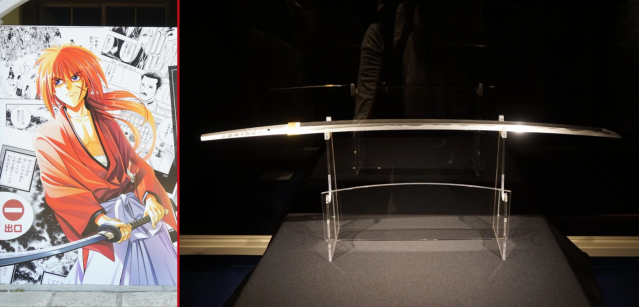
The sakabato, one of the most famous swords of the anime/manga world, is now part of the real world.
The most iconic sword in the Rurouni Kenshin anime/manga series is the titular protagonist’s sakabato, a reverse-edged katana with its cutting surface on the inside of the curve. This allows redemption-seeking swordsman Himura Kenshin to regularly engage in intense katana clashes and come out victorious without ever killing his opponent, thus keeping his personal vow to never again take the life of another.
However, during the periods of history when people felt the need to carry katana, actual Japan was too dangerous to burden yourself with that sort of combat handicap, and the sakabato is a weapon that was made up specifically to fit the plot and characters of Rurouni Kenshin. But there’s now a genuine real-world sakabato, and we recently got to see it for ourselves.
The Meijimura complex in Inuyama, Aichi Prefecture, is a facility consisting of relocated buildings from the Meiji era (1868-1912), the same swath of time in which Rurouni Kenshin takes place. Between now and December 15, the Meijimura museum is currently hosting a special Rurouni Kenshin exhibition, and the centerpiece is the Sakabato Shinuchi (“Shinuchi” meaning “Truly Forged”).
The Sakabato Shinuchi is the first official real-world version of Kenshin’s blade, and it has an enormous sense of presence. One thing you’ll notice right away is that the hamon, distinctive tempering lines that appear along the cutting edge, are on the inner curve, providing immediate visual proof that this is an actual reverse-edged sword.
Before we get further into discussing the sword, though, let’s take a moment to meet the swordsmith. Kanekuni Ogawa has won multiple special awards from the Society for Preservation of Japanese Art Swords for his craftsmanship in the organization’s Modern Swordsmith Exhibition contests, and his skills are such that he himself has been officially deemed an important intangible cultural property by the city of Seki, Japan’s most prestigious producer of swords and cutlery.
With those credentials, you might think that making a real-life sakabato would be an easy task, but that’s not the case. For one thing, since the sword exists as a mere 2-D illustration in the Rurouni Kenshin anime/manga, its appearance fluctuates depending on the scene, distorting to give the necessary visual impressions of weight, sharpness, and speed. Because of that, Ogawa’s first step was to look through the source material in order to come up with the curvature that would best embody a real-world version of Kenshin’s sword.
It’s not just the curve of the sword that’s inconsistent in the source material, either. The appearance of the hamon varies by scene as well, so once again Ogawa needed to come up with a single design that would encompass all of the illustrated atmospheres. He eventually settled on a gunome pattern, irregularly undulating waves, but with gentle transitions, like a metaphor for the turbulent internal struggles that Kenshin faces while holding on to his core kindness and humanity.
The Sakabato Shinuchi has a large quantity of nie, crystals that form as part of the quenching process and give the blade a bright sheen and impart a moistened metal visual effect.
But while the illustrated vagaries above left Ogawa with some extra design work to do, he says the most difficult part of making the sword stemmed from something that was present in the manga/anime artwork. Because katana are sharpened on only one side, they have a distinct ridgeline, called a shinogi, that runs along the flat side of the blade. In most katana this tapers off somewhere before the tip, but Kenshin’s sakabato has an unorthodox shinogi that continues straight ahead to the final point of the metal.
Replicating this was tricky, but not beyond Ogawa’s capabilities, and the result is a tip that catches the light in extremely captivating ways.
Japanese swords are displayed without handles, so as to let viewers admire the mark of the swordsmith that’s placed at the base of the metal. The Sakabato Shinuchi, however, bears not only the mark of Ogawa…
…but also the death poem of Arai Shakku, the in-manga swordsmith who forged Kenshin’s blade within the story.
In our talk, Ogawa mentioned several other challenges making the sword presented, saying that the most difficult job went to the sword’s sharpener, who had to hone a cutting edge that’s completely opposite from those traditional techniques they were developed for.
With so much effort involved, we were thinking that perhaps Ogawa agreed to forge the real-world sakabato as a labor of love saluting his personal favorite anime/manga, but he surprised us by saying that prior to taking on the contract to make the Sakabato Shinuchi, he’d never read nor watched Rurouni Kenshin.
“I agreed to make the sword because they asked me to, and once I’d agreed, I couldn’t say that I couldn’t or wouldn’t just because it was difficult,” he explains, matter-of-factly, showing that in addition to making samurai weaponry, he also has a samurai-level sense of pride and devotion.
Museum information
The Museum Meijimura / 博物館明治村
Address: Aichi-ken, Inuyama-shi, Uchiyama 1
愛知県犬山市字内山1番地
Open hours vary daily
Museum website
Rurouni Kenshin exhibition website
Meijimura website
Photos ©SoraNews24
● Want to hear about SoraNews24’s latest articles as soon as they’re published? Follow us on Facebook and Twitter!
[ Read in Japanese ]

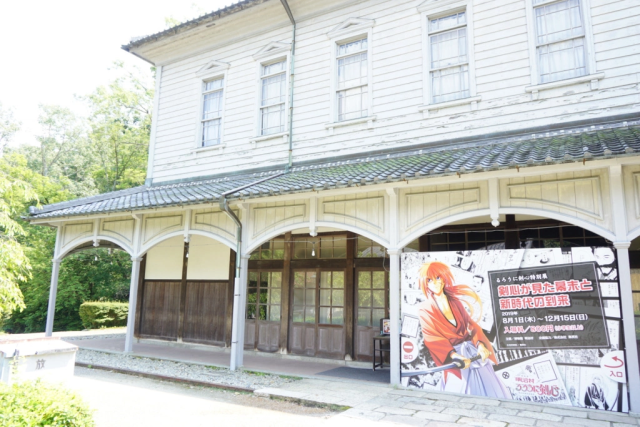
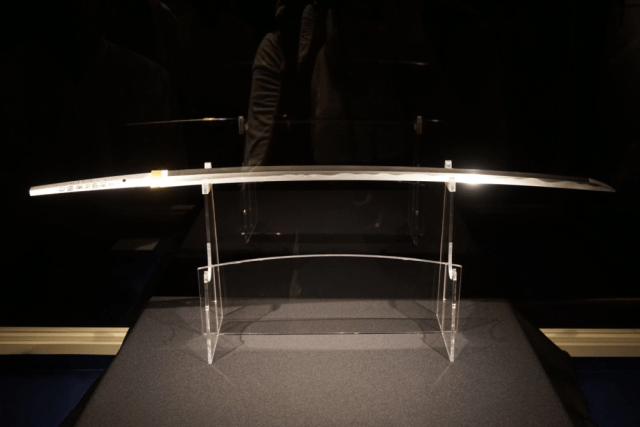
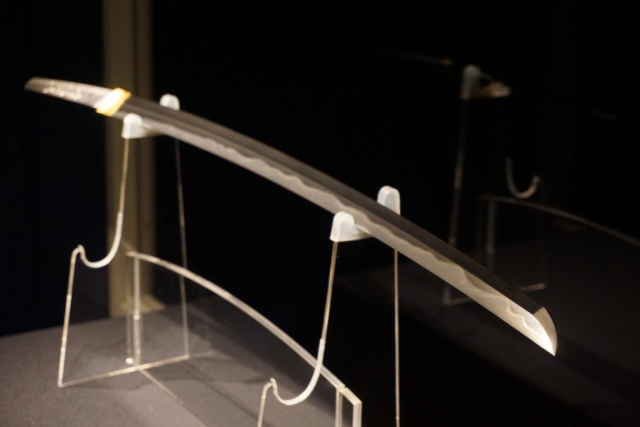
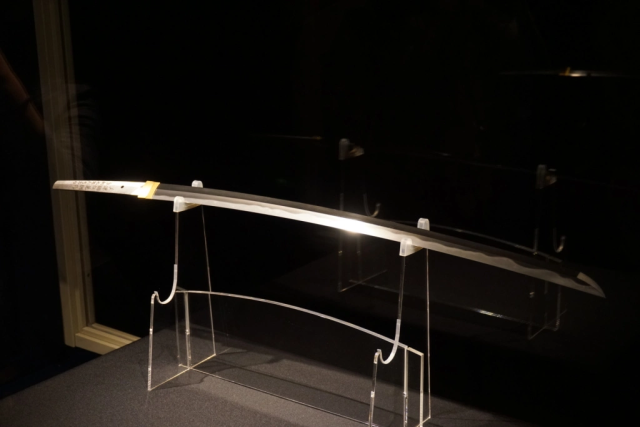
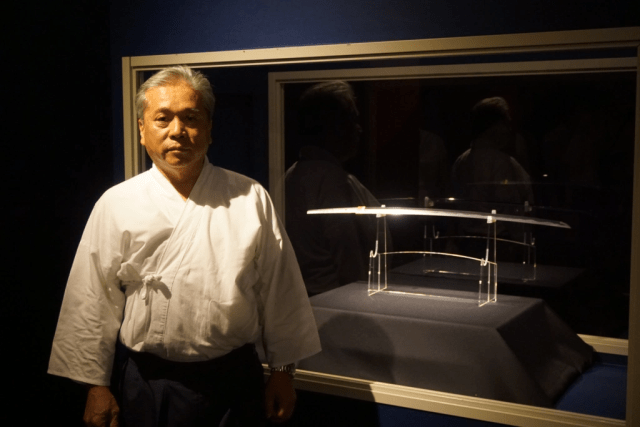
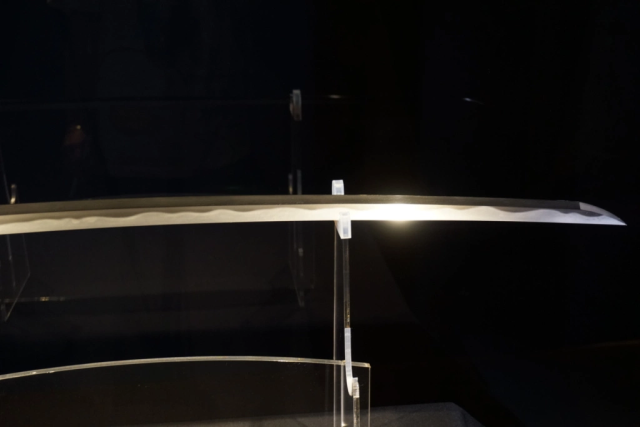
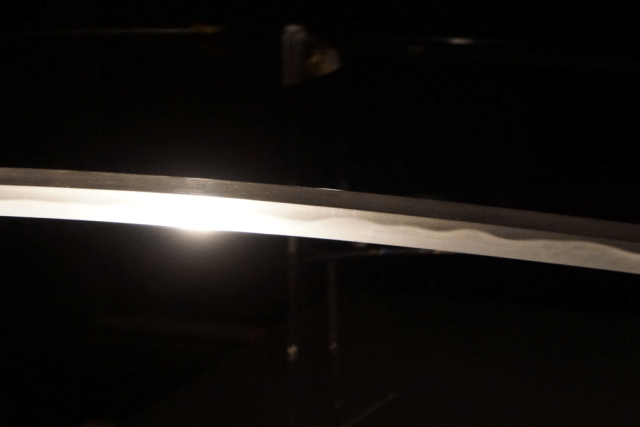
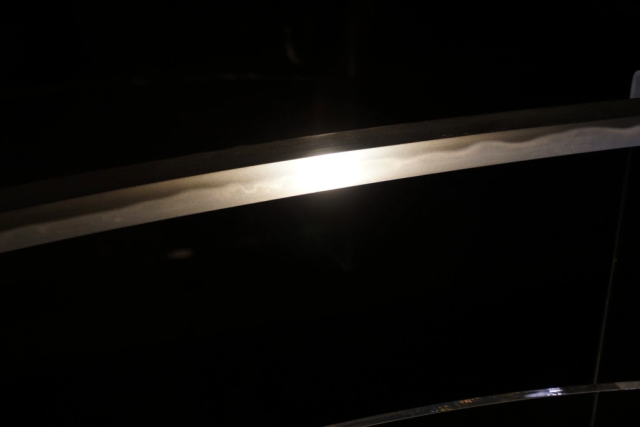
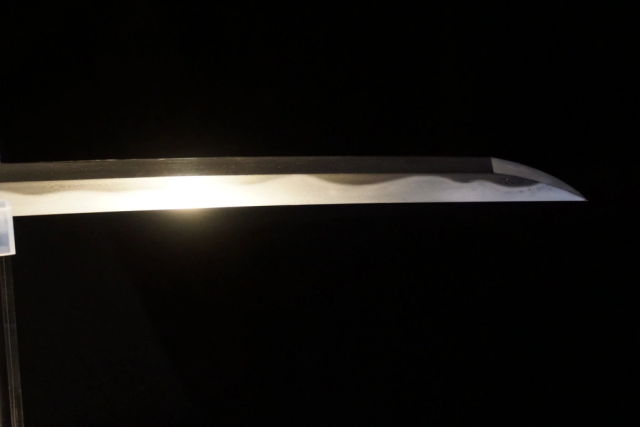
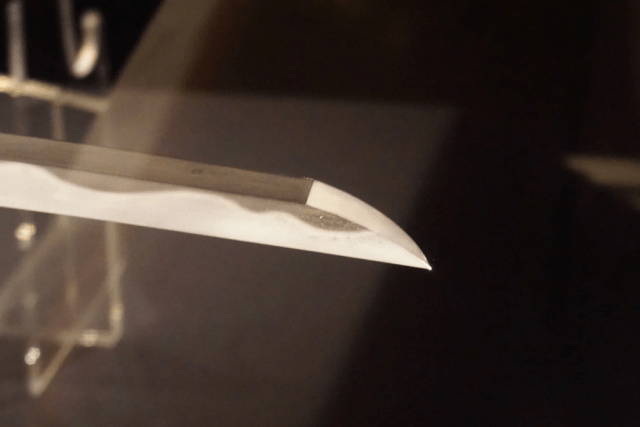
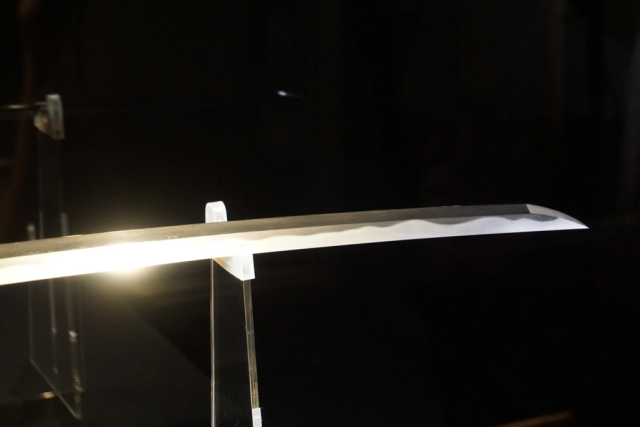
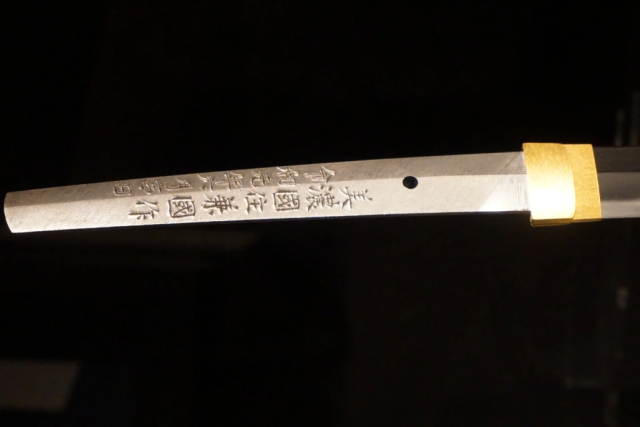
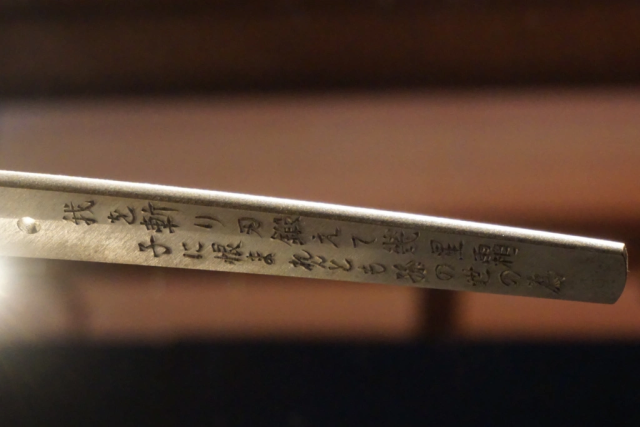
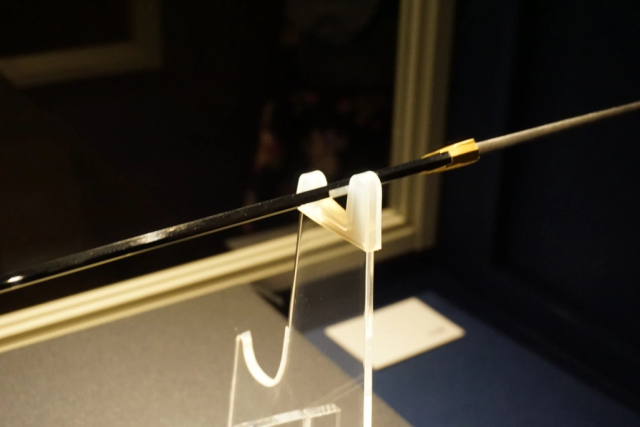
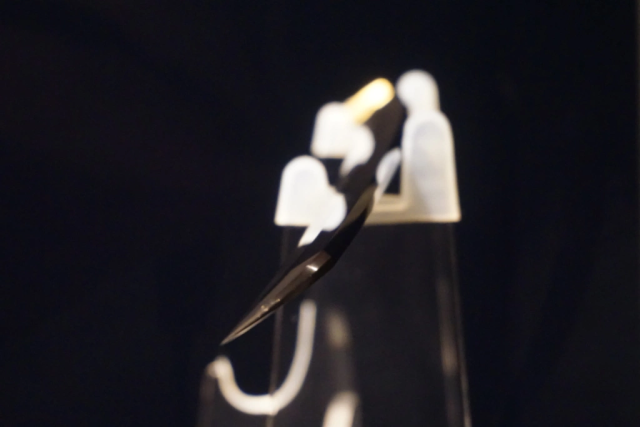
 Real-life Rurouni Kenshin reverse-blade sword to be displayed in Tokyo
Real-life Rurouni Kenshin reverse-blade sword to be displayed in Tokyo Real-life Rurouni Kenshin reverse-blade katana now on display in Tokyo【Photos】
Real-life Rurouni Kenshin reverse-blade katana now on display in Tokyo【Photos】 Real-life Rurouni Kenshin katana forged based on sword of series’ most merciless villain【Photos】
Real-life Rurouni Kenshin katana forged based on sword of series’ most merciless villain【Photos】 Swords of famous samurai reborn as beautiful kitchen knives from Japan’s number-one katana town
Swords of famous samurai reborn as beautiful kitchen knives from Japan’s number-one katana town This hotel has one of the coolest katana collections in Japan, and admission is totally free【Pics】
This hotel has one of the coolest katana collections in Japan, and admission is totally free【Pics】 Seaside scenery, history, and so many desserts on Yokohama’s Akai Kutsu【Japan Loop Buses】
Seaside scenery, history, and so many desserts on Yokohama’s Akai Kutsu【Japan Loop Buses】 Foreigner’s request for help in Tokyo makes us sad for the state of society
Foreigner’s request for help in Tokyo makes us sad for the state of society Japanese city loses residents’ personal data, which was on paper being transported on a windy day
Japanese city loses residents’ personal data, which was on paper being transported on a windy day Ghibli Park now selling “Grilled Frogs” from food cart in Valley of Witches
Ghibli Park now selling “Grilled Frogs” from food cart in Valley of Witches Princesses, fruits, and blacksmiths: Study reveals the 30 most unusual family names in Japan
Princesses, fruits, and blacksmiths: Study reveals the 30 most unusual family names in Japan Historical figures get manga makeovers from artists of Spy x Family, My Hero Academia and more
Historical figures get manga makeovers from artists of Spy x Family, My Hero Academia and more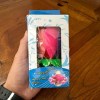 Celebrate another year of life by putting it in jeopardy with this birthday candle flower
Celebrate another year of life by putting it in jeopardy with this birthday candle flower Should you add tartar sauce to Japanese curry rice? CoCo Ichi makes diners an unusual offer
Should you add tartar sauce to Japanese curry rice? CoCo Ichi makes diners an unusual offer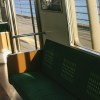 Japanese woman stumbles on the power of the infamous “gaijin seat” phenomenon during flight
Japanese woman stumbles on the power of the infamous “gaijin seat” phenomenon during flight French Fries Bread in Tokyo’s Shibuya becomes a hit on social media
French Fries Bread in Tokyo’s Shibuya becomes a hit on social media McDonald’s new Happy Meals offer up cute and practical Sanrio lifestyle goods
McDonald’s new Happy Meals offer up cute and practical Sanrio lifestyle goods Japanese ramen restaurants under pressure from new yen banknotes
Japanese ramen restaurants under pressure from new yen banknotes Studio Ghibli releases new action figures featuring Nausicaä of the Valley of the Wind characters
Studio Ghibli releases new action figures featuring Nausicaä of the Valley of the Wind characters Red light district sushi restaurant in Tokyo shows us just how wrong we were about it
Red light district sushi restaurant in Tokyo shows us just how wrong we were about it New private rooms on Tokaido Shinkansen change the way we travel from Tokyo to Kyoto
New private rooms on Tokaido Shinkansen change the way we travel from Tokyo to Kyoto Tokyo Tsukiji fish market site to be redeveloped with 50,000-seat stadium, hotel, shopping center
Tokyo Tsukiji fish market site to be redeveloped with 50,000-seat stadium, hotel, shopping center Beautiful Ghibli sealing wax kits let you create accessories and elegant letter decorations【Pics】
Beautiful Ghibli sealing wax kits let you create accessories and elegant letter decorations【Pics】 Studio Ghibli releases Kiki’s Delivery Service chocolate cake pouches in Japan
Studio Ghibli releases Kiki’s Delivery Service chocolate cake pouches in Japan New definition of “Japanese whiskey” goes into effect to prevent fakes from fooling overseas buyers
New definition of “Japanese whiskey” goes into effect to prevent fakes from fooling overseas buyers Our Japanese reporter visits Costco in the U.S., finds super American and very Japanese things
Our Japanese reporter visits Costco in the U.S., finds super American and very Japanese things All-you-can-drink Starbucks and amazing views part of Tokyo’s new 170 meter-high sky lounge
All-you-can-drink Starbucks and amazing views part of Tokyo’s new 170 meter-high sky lounge More foreign tourists than ever before in history visited Japan last month
More foreign tourists than ever before in history visited Japan last month New Pokémon cakes let you eat your way through Pikachu and all the Eevee evolutions
New Pokémon cakes let you eat your way through Pikachu and all the Eevee evolutions Disney princesses get official manga makeovers for Manga Princess Cafe opening in Tokyo
Disney princesses get official manga makeovers for Manga Princess Cafe opening in Tokyo Sales of Japan’s most convenient train ticket/shopping payment cards suspended indefinitely
Sales of Japan’s most convenient train ticket/shopping payment cards suspended indefinitely Sold-out Studio Ghibli desktop humidifiers are back so Totoro can help you through the dry season
Sold-out Studio Ghibli desktop humidifiers are back so Totoro can help you through the dry season Japanese government to make first change to romanization spelling rules since the 1950s
Japanese government to make first change to romanization spelling rules since the 1950s Ghibli founders Toshio Suzuki and Hayao Miyazaki contribute to Japanese whisky Totoro label design
Ghibli founders Toshio Suzuki and Hayao Miyazaki contribute to Japanese whisky Totoro label design Doraemon found buried at sea as scene from 1993 anime becomes real life【Photos】
Doraemon found buried at sea as scene from 1993 anime becomes real life【Photos】 Tokyo’s most famous Starbucks is closed
Tokyo’s most famous Starbucks is closed One Piece characters’ nationalities revealed, but fans have mixed opinions
One Piece characters’ nationalities revealed, but fans have mixed opinions We asked a Uniqlo employee what four things we should buy and their suggestions didn’t disappoint
We asked a Uniqlo employee what four things we should buy and their suggestions didn’t disappoint Japan’s legendary Brother Katana might not be brothers after all? Investigating the mystery【Pics】
Japan’s legendary Brother Katana might not be brothers after all? Investigating the mystery【Pics】 Rurouni Kitty! Sanrio’s beloved cat cosplays as anime’s iconic swordsman in plushie form
Rurouni Kitty! Sanrio’s beloved cat cosplays as anime’s iconic swordsman in plushie form Final Fantasy artist Yoshitaka Amano anthropomorphizes katana made from a meteorite
Final Fantasy artist Yoshitaka Amano anthropomorphizes katana made from a meteorite Genuine Muramasa blade and Muromachi katana on display at Tokyo’s Touken Ranbu store【Photos】
Genuine Muramasa blade and Muromachi katana on display at Tokyo’s Touken Ranbu store【Photos】 Rurouni Kenshin comes to picture-perfect life as photos of stage musical’s cast are released
Rurouni Kenshin comes to picture-perfect life as photos of stage musical’s cast are released Dojigiri, the millennium-old katana said to have slain a demon, is now on display in Tokyo【Pics】
Dojigiri, the millennium-old katana said to have slain a demon, is now on display in Tokyo【Pics】 Amazing exhibition of Japan’s legendary “cursed katana” is going on right now【Photos】
Amazing exhibition of Japan’s legendary “cursed katana” is going on right now【Photos】 Japan is running out of swordsmiths, and a strict apprenticeship requirement is a big reason why
Japan is running out of swordsmiths, and a strict apprenticeship requirement is a big reason why Rurouni Kenshin trailer has rocking theme, gorgeous sets, dudes trying to stab each other
Rurouni Kenshin trailer has rocking theme, gorgeous sets, dudes trying to stab each other Demon-slaying Dojigiri, one of Japan’s Five Swords Under Heaven, now on display at Kasuga Shrine
Demon-slaying Dojigiri, one of Japan’s Five Swords Under Heaven, now on display at Kasuga Shrine Scholars confirm first discovery of Japanese sword from master bladesmith Masamune in 150 years
Scholars confirm first discovery of Japanese sword from master bladesmith Masamune in 150 years Legendary crescent moon katana, one of Japan’s Five Swords Under Heaven, now on display in Tokyo
Legendary crescent moon katana, one of Japan’s Five Swords Under Heaven, now on display in Tokyo One Piece anime katanas recreated as exquisite letter openers by Japan’s swordsmith legacy heirs
One Piece anime katanas recreated as exquisite letter openers by Japan’s swordsmith legacy heirs Japanese city offering authentic handcrafted swords in exchange for “tax” payments
Japanese city offering authentic handcrafted swords in exchange for “tax” payments Want to become a swordsmith? Apprenticeship opens in Japan, but the fine print might shock you
Want to become a swordsmith? Apprenticeship opens in Japan, but the fine print might shock you Sailor Moon super-collector gathers 140 fans to give voice actress an unforgettable birthday card
Sailor Moon super-collector gathers 140 fans to give voice actress an unforgettable birthday card
Leave a Reply